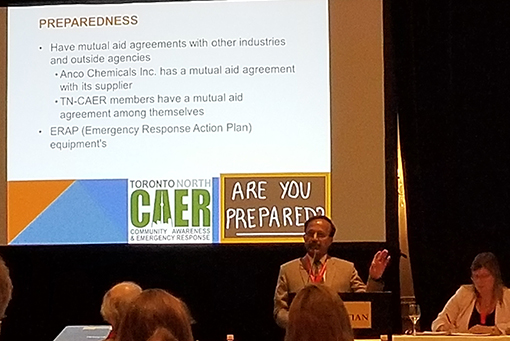
David Clarke of FESTI made a presentation on the Incident Command System (ICS). He outlined the history of ICS. David explained why it is important to have an Incident Command System and it is necessary to correct communications first.
ICS is used to manage incidents and events. It is scalable where is can change size, type and complexity. ICS uses only 3 to 7 subordinates within a manager’s span of control. The unified command needs a commander, fire chief, police, transport, paramedic, and is some cases a provincial/state regulator. There is a need to use company experts (i.e., responsible agency/company) and emergency services.
David outlined the role of some of the key ICS command staff including: the Incident Commander oversees the incident; Safety Officer; Public Information Officer; and Liaison Officer.
The Operations roles are for the doers. They have expertise to deal with the incident and to contribute to strategies and tactics. The Planning of the incident response is done through the Incident Command Action Plan which can be changed on the fly as needed. Planning contains Resource, Situation, Document and Demobilization Units. The Logistics section includes units for: communications, medical, food, supply, facilities and ground support. David concluded saying that the Finance and Administration components include incident costs, financial considerations and procurement. Field Implementation includes preparedness, response recovery and mitigation.




